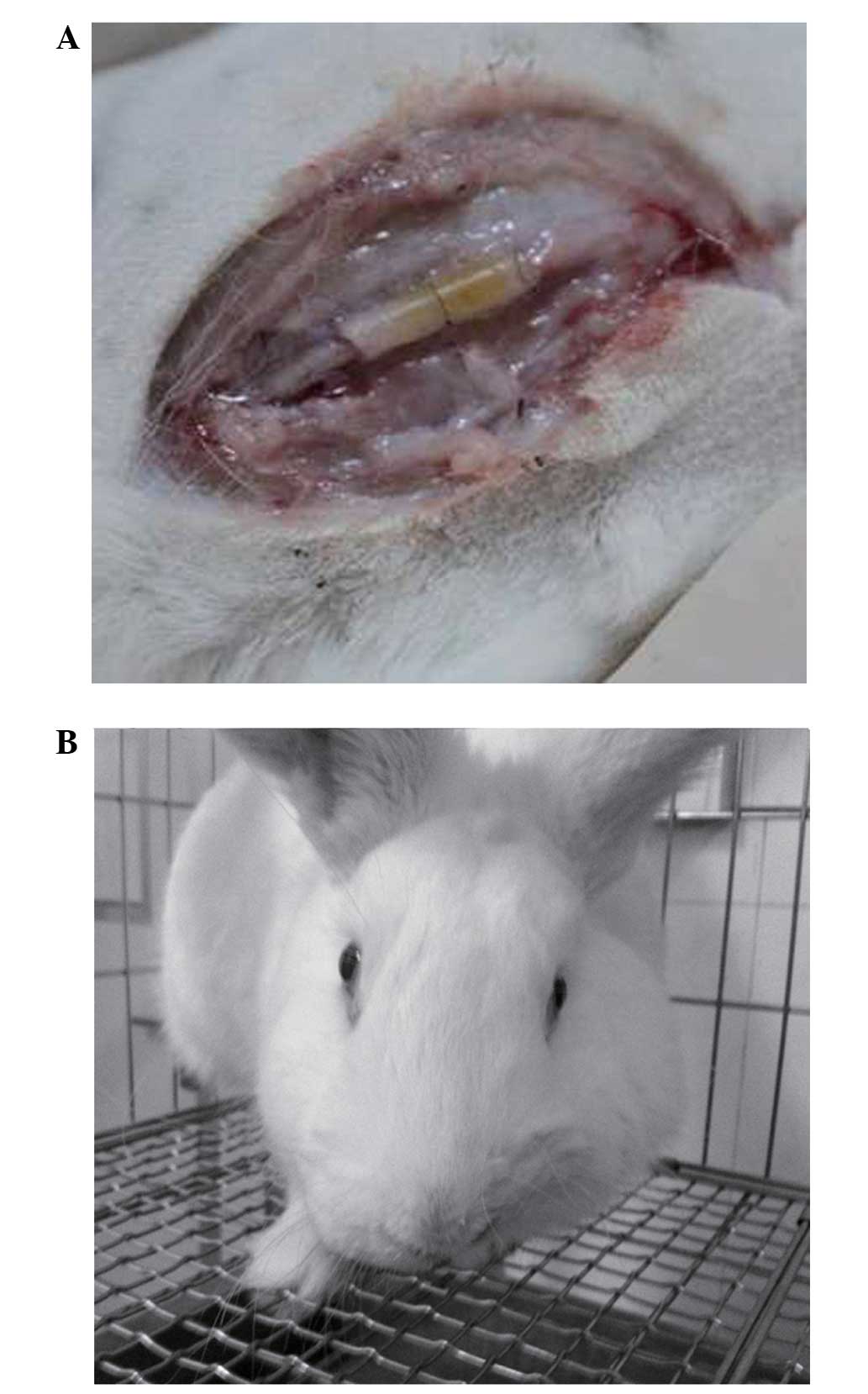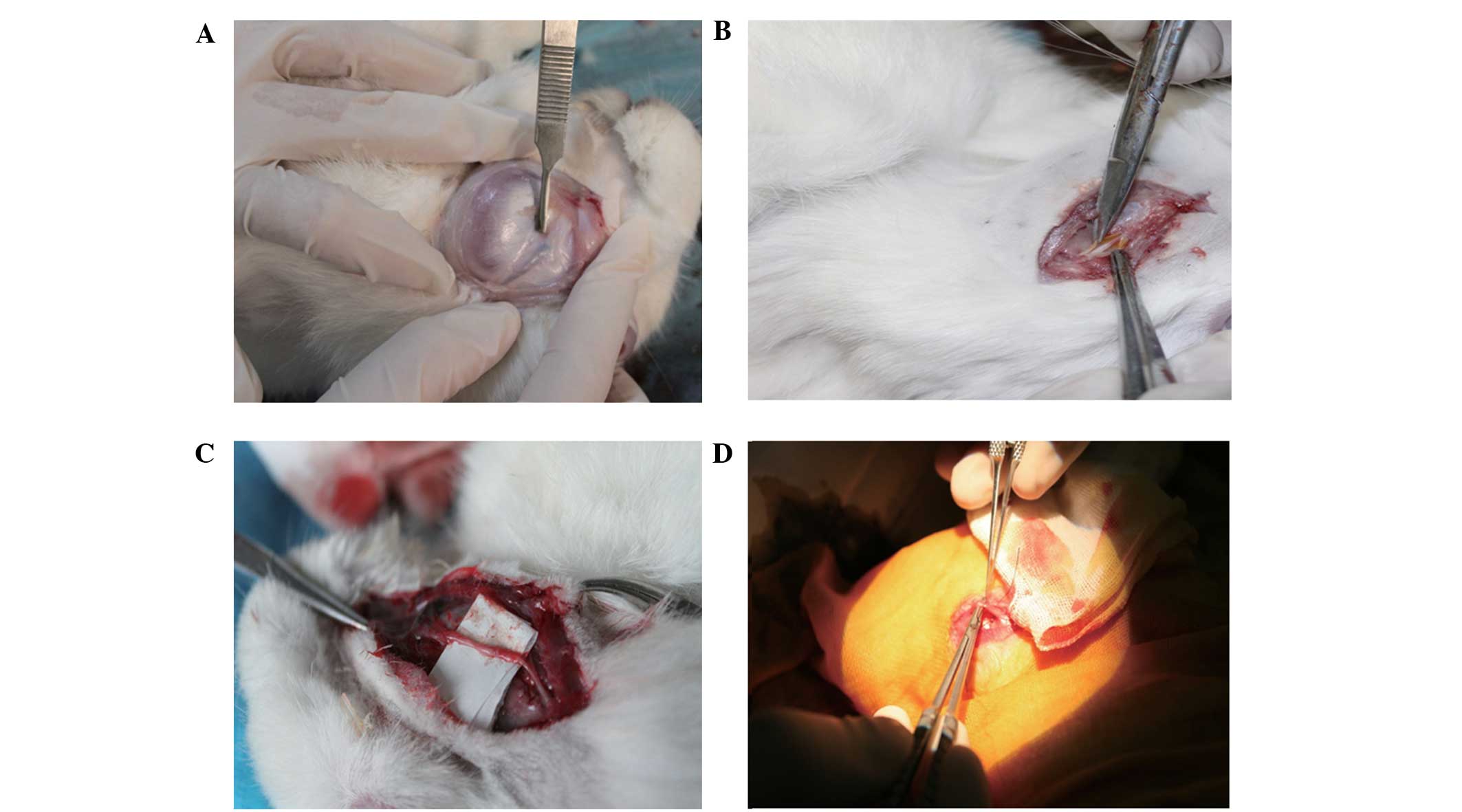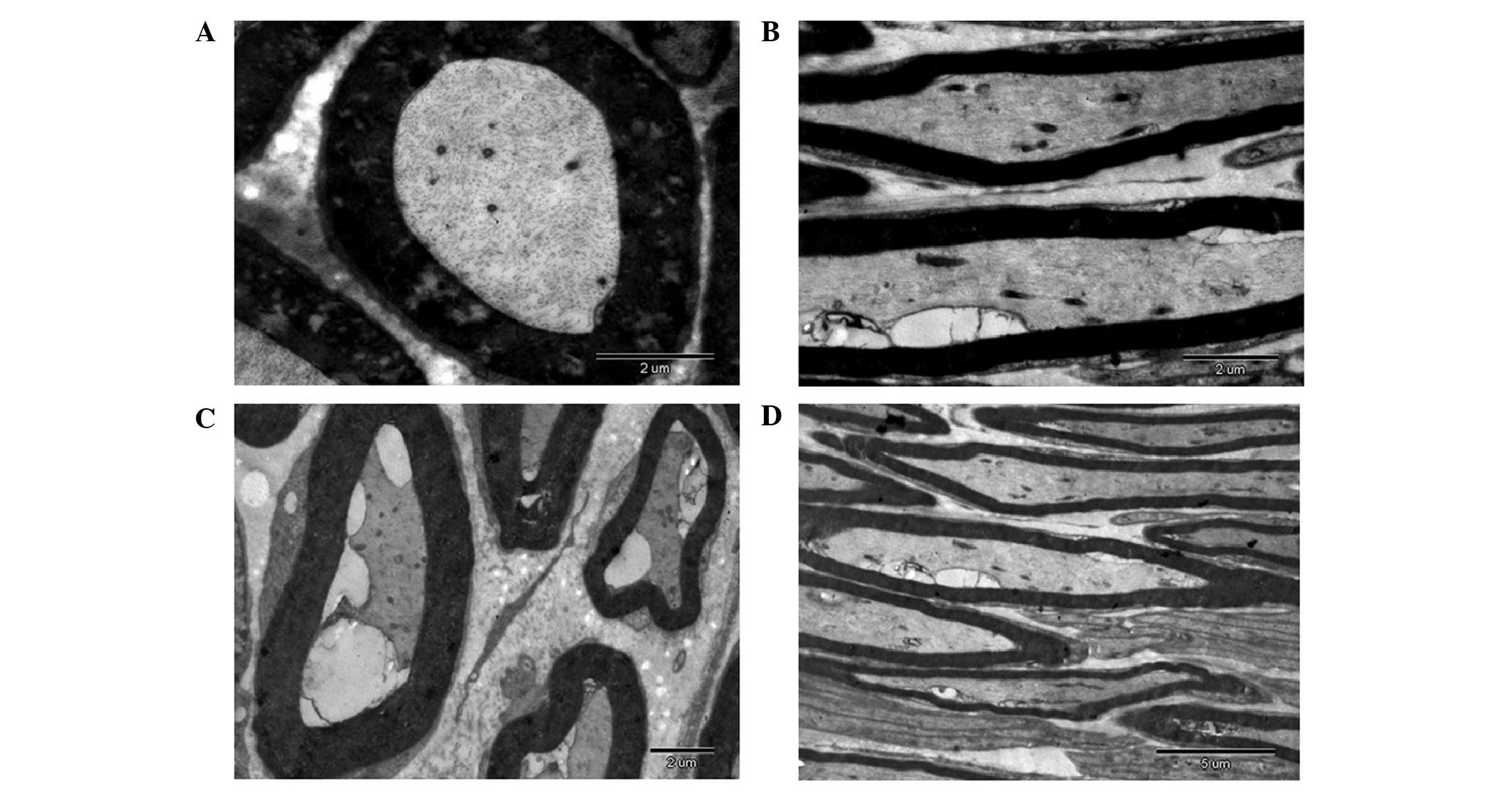|
1
|
Malik TH, Kelly G, Ahmed A, et al: A
comparison of surgical techniques used in dynamic reanimation of
the paralyzed face. 0tol Neurotol. 26:284–291. 2005. View Article : Google Scholar
|
|
2
|
Guntinas-Lichius O, Streppel M and
Stennert E: Postoperative functional evaluation of different
reanimation techniques for facial nerve repair. Am J Surg.
191:61–67. 2006. View Article : Google Scholar : PubMed/NCBI
|
|
3
|
Yetiser S and Karapinar U:
Hypoglossal-facial nerve anastomosis:a meta-analytic study [J].
Annals of Otology Rhinology & Laryngolog. 116:542–549. 2007.
View Article : Google Scholar
|
|
4
|
Lloyd BM, Luginbuhl RD and Brenner MJ: Use
of motor nerve material in peripheral nerve repair with conduits.
Microsurgery. 27:138–145. 2007. View Article : Google Scholar : PubMed/NCBI
|
|
5
|
lgnatiadis IA, Yiannakopoulos CK and
Barbitsioti AD: Diverse types of epineural conduits for bridging
short nerve defects = An experimental study in the rabbit.
Microsurgery. 27:98–104. 2007. View Article : Google Scholar : PubMed/NCBI
|
|
6
|
Serpe CJ, Byram SC, Sanders VM and Jones
KJ: Brain-derived neurotrophic factor supports facial motoneuron
survival after facial nerve transection in immunodeficient mice.
Brain, Behavior, and Immunity. 19:946–949. 2005. View Article : Google Scholar
|
|
7
|
Indrawattana N, Chen G, Tadokoro M, Shann
LH, Ohgushi H, Tateishi T, Tanaka J and Bunyaratvej A: Growth
factor combination for chondrogenic induction from human
mesenchymal stem cell. Biochem Biophys Res Commun. 320:914–919.
2004. View Article : Google Scholar : PubMed/NCBI
|
|
8
|
Saber SE: Tissue engineering in
endodontics. J Oral Sci. 51:495–507. 2009. View Article : Google Scholar : PubMed/NCBI
|
|
9
|
Chen SY, Li YX, Ma Xin, Chen JS, Zhou GY
and Gong ZX: Experimental study on the effect of extrinsic
insulin-like growth factor-2 on the healing of skeletal muscle
contusion. Zhong Guo Yun Dong Yi Xue Za Zhi. 3:23–26. 2002.
|
|
10
|
Markou N, Pepelassi E and Kotsovilis S:
The use of platelet-rich plasma combined with demineralized
freeze-dried bone al ograft in the treatment of periodontal
endosseous defects:a report of two clinical cases. Journal of the
American Dental Association. 141:967–978. 2010. View Article : Google Scholar : PubMed/NCBI
|
|
11
|
Baardsnes J, Hinck CS, Hinck AP and
O'Connor-McCourt MD: TbetaR-II discriminates the high-and
low-affinity TGF-beta isoforms via two hydrogen-bonded ion pairs.
Biochemistry. 48:2146–2155. 2009. View Article : Google Scholar : PubMed/NCBI
|
|
12
|
Boillée S, Cadusseau J, Coulpier M,
Grannec G and Junier P: Transforming growth factor alpha: A
promoter of motoneuron survival of potential biological relevance.
J Neurosci. 21:7079–7088. 2001.PubMed/NCBI
|
|
13
|
Caron PL, Fréchette-Frigon G, Shooner C,
Leblanc V and Asselin E: Transforming growth factor beta isoforms
regulation of Akt activity and XIAP levels in rat endometrium
during estrous cycle, in a model of pseudopregnancy and in cultured
decidual cells. Reprod Biol Endxocrinol. 7:802009. View Article : Google Scholar
|
|
14
|
Memon MA, Anway MD, Covert TR, Uzumcu M
and Skinner MK: Transforming growth factor beta (TGFbeta1, TGFbeta2
and TGFbeta3) null-mutant phenotypes in embryonic gonadal
development. Mol Cell Endocrinol. 294:70–80. 2008. View Article : Google Scholar : PubMed/NCBI
|
|
15
|
Jin EJ, Lee SY, Jung JC, Bang OS and Kang
SS: TGF-beta3 inhibits chondrogenesis of cultured chick leg bud
mesenchymal cells via downregulation of connexin 43 and integrin
beta4. J Cell Physiol. 214:345–353. 2008. View Article : Google Scholar : PubMed/NCBI
|
|
16
|
Sasaki R, Aoki S, Yamato M, Uchiyama H,
Wada K, Okano T and Ogiuchi H: Neurosphere generation from dental
pulp of adult rat incisor. Eur J Neurosci. 27:538–548. 2008.
View Article : Google Scholar : PubMed/NCBI
|
|
17
|
Shan ZQ, Wang XB, Zhao L and Yu GS:
Anatomy and application of extracranial section of rat facial
nerve. Zhong Guo Jie Pou Xue Za Zhi. 28:82–83. 2005.(In
Chinese).
|
|
18
|
Gallo D, Zannoni GF, Apollonio P,
Martinelli E, Ferlini C, Passetti G, Riva A, Morazzoni P,
Bombardelli E and Scambia G: Characterization of the pharmacologic
profile of a standardized soy extract in the ovariectomized rat
model of menopause: Effects on bone, uterus, and lipid profile.
Menopause. 12:589–600. 2005. View Article : Google Scholar : PubMed/NCBI
|
|
19
|
Liao JM, Xu DC and Zhong SZ: Research
progress on repair donors of the facial nerve defects. Lin Chuang
Jie Pou Xue Za Zhi. 22:222–223. 2004.(In Chinese).
|
|
20
|
Koshima I, Nanba Y, Tsutsui T, Takahashi Y
and Itoh S: New one-stage nerve pedicle grafting technique using
the great auricular nerve for reconstruction of facial nerve
defects. J Reconstr Microsurg. 20:357–361. 2004. View Article : Google Scholar : PubMed/NCBI
|
|
21
|
Jin H and Hou LJ: Study on traumatic
facial nerve injury: Recent progress. Di Er Jun Yi Da Xue Bao.
29:1248–1250. 2008.(In Chinese).
|
|
22
|
Wang WH, Xu B, Zhu J and Xia B:
Expressions of BCL-2 and P53 in neurons following facial nerve
injury. Xian Dai Kou Qiang Yi Xue Za Zhi. 23:1552009.(In
Chinese).
|
|
23
|
Donzelli R, Maiuri F, Peca C, Cavallo LM,
Motta G and de Divitiis E: Microsurgical repair of the facial
nerve. Zentralbl Neurochir. 66:63–69. 2005. View Article : Google Scholar : PubMed/NCBI
|
|
24
|
Malik TH, Kelly G, Ahmed A, Saeed SR and
Ramsden RT: A comparison of surgical techniques used in dynamic
reanimation of the paralyzed face. Otol Neurotol. 26:284–291. 2005.
View Article : Google Scholar : PubMed/NCBI
|
|
25
|
Guntinas-Lichius O, Streppel M and
Stennert E: Postoperative functional evaluation of different
reanimation techniques for facial nerve repair. Am J Surg.
191:61–67. 2006. View Article : Google Scholar : PubMed/NCBI
|
|
26
|
Lundborg G and Hansson HA: Nerve
regeneration through preformed pseudosynovial tubes. A preliminary
report of a new experimental model for studying the regeneration
and reorganization capacity of peripheral nerve tissue. J Hand Surg
Am. 5:35–38. 1980. View Article : Google Scholar : PubMed/NCBI
|
|
27
|
Huang XW, Tao ZZ, Cui YH and Zhang P: The
study on facial nerve regeneration guided by chitin guidance
channel. Lin Chuang Kou Qiang Yi Xua Za Zhi. 19:26–27. 2003.(In
Chinese).
|
|
28
|
Zhou CY and Luo WL: Preliminary
experimental study on the facial nerve regeneration in silicone
chamber: the influence of hepatocyte growth factor. Chong Qing Yi
Xue Za Zhi. 32:299–300. 2003.(In Chinese).
|
|
29
|
Luo WL and Zhang H: Study on role of
thyroid hormone in repair of rabbit facial nerve injury. Chong Qing
Yi Xue Za Zhi. 36:1121–1123. 2007.(In Chinese).
|
|
30
|
Guo BF, Dong MM and Ren XH: Effect of
neural stem cell transplantation on rabbit facial nerve defect
repair. Zhong Guo Er Bi Yan Hou Tou Jing Wai Ke. 9:6–8. 2005.(In
Chinese).
|


















